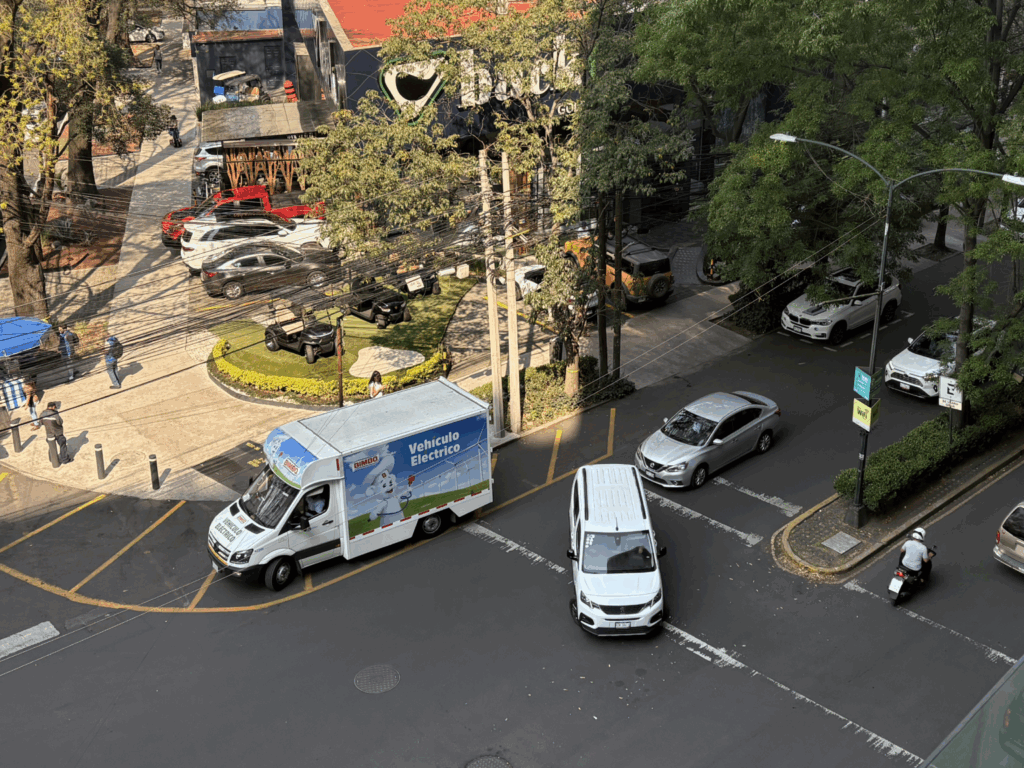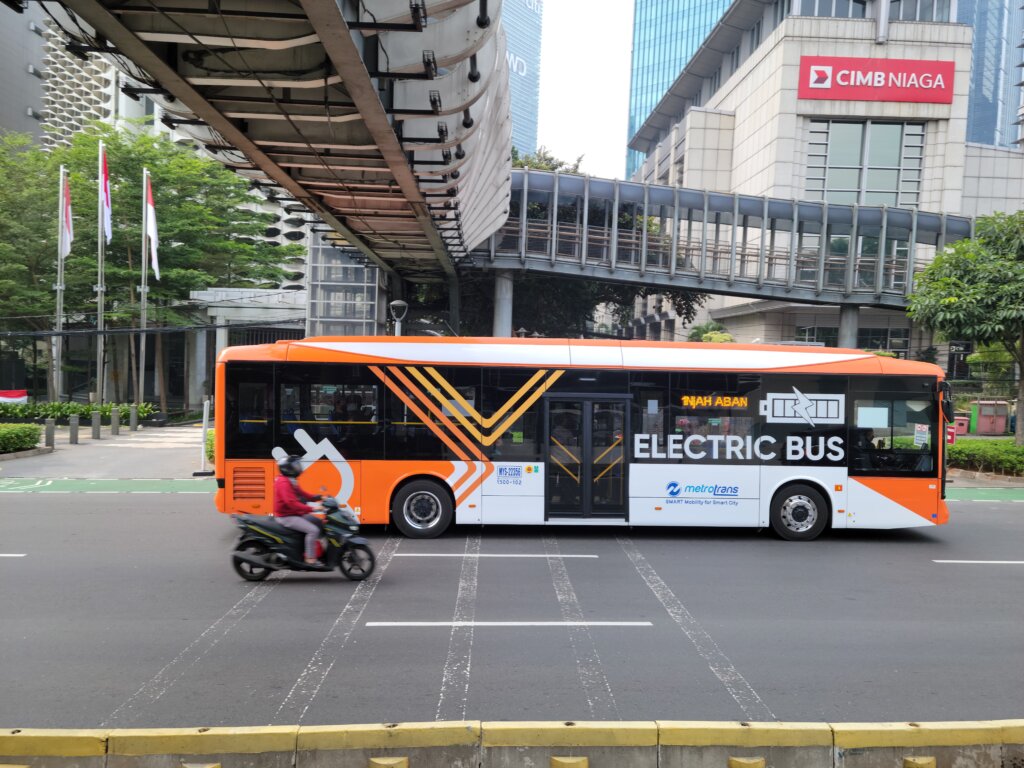
ClimateWorks’ Sebastian Castellanos explains the importance of accelerating electric vehicle adoption — especially in emerging economies.
By many measures, progress on global climate goals is not happening at the necessary pace and scale. There is a notable exception: the tipping point for the transition to electric vehicles.
The Drive Electric Campaign is a global partnership of leading NGOs, funders, and coalitions working to accelerate the transition to a clean transportation future. Hosted by ClimateWorks, Drive Electric partners have helped inform policy developments and support major commitments from governments and businesses across the largest vehicle markets of Europe, the United States, China, and India. By several important metrics, progress is on track. In 2024, electric vehicles (EVs) comprised more than 25% of total passenger vehicle sales globally. Additionally, more than 40% of the world’s transportation demand is covered by governments and businesses committed to reaching 100% EV adoption by 2050.
Yet by 2050, most new vehicle demand growth will be in emerging economies. The accelerated production and adoption of EVs of all types — cars, trucks, buses, two- and three-wheelers — is crucial to achieving global climate goals while making clean transportation accessible for communities in these countries.
That’s why Drive Electric announced its Leapfrogging Partnership initiative last year to deepen the Campaign’s work with partners across Africa, Latin America, and Southeast Asia. ClimateWorks’ Mara Silvero recently sat down with Sebastian Castellanos, Drive Electric’s Associate Director for Emerging Economies, to discuss how the Leapfrogging Partnership is co-creating strategies to accelerate clean transportation — and ensuring that the climate, health, and economic benefits of a zero-emission future are accessible to all.

Mara Silverio: What excites you most about progress toward zero-emission transportation?
Sebastian Castellanos: Many people assume that electric transportation is only for high-income countries because it currently tends to have higher up-front costs. But what’s exciting to me is that there are more and more examples where low- and middle-income countries can bring prices down on electric cars, motorcycles, trucks, and buses, supporting widespread adoption of zero-emission transportation.
Being from Colombia, I want to mention POLEN Transiciones Justas, one of our grantee partners in Colombia. They’re doing work in La Guajira, a remote region that has been historically neglected by investments of all sorts. La Guajira has very rugged terrain, so people need high-quality vehicles (usually motorcycles) to live there.
POLEN trains local people on how to retrofit their dirty combustion engine motorcycles to electric drivetrain. They’ve paired that work with building a solar microgrid that provides affordable, local charging for these new e-motorcycles, and local residents are already seeing a big positive impact on their everyday transportation costs. This is just one small example of how electric mobility can improve livelihoods around the world.
The Leapfrogging Partnership, which the Drive Electric Campaign launched in 2024 with a four-year investment from the IKEA Foundation, is looking to scale this kind of work in emerging economies across Africa, Southeast Asia, and Latin America. The initiative works closely with local partners to ensure that these efforts are rooted in context and co-created with the folks on the ground.
Silverio: How are emerging economies approaching zero-emission transportation? What unique challenges or opportunities do you see in these regions?
Castellanos: In general, high-income countries are adopting electric mobility at higher rates than low- and middle-income countries. Without significant action, this gap will continue to grow: estimates say we’ll add about 1 billion more new vehicles to the road in the next 25 years, and most of them will be in emerging economies. Gas-powered vehicles have a typical life span of 20 to 30 years — so if we don’t close the EV adoption gap soon, many countries are going to be stuck with a high percentage of polluting vehicles for a very long time.
Philanthropy and civil society can help spur the transition to electric vehicles by supporting strong public policies. Right now, most vehicle manufacturers and sellers are focused on high-income countries, so we need to support them also to prioritize low- and middle-income countries. Strong public policy has enabled the adoption of electric mobility in high-income countries; emerging economies can adapt similar policies to local contexts to create the right environment, for both sellers and buyers, to boost the market for electric transportation.
Silverio: What is something that you wish people knew about working on electric transportation?
Castellanos: You need a lot of patience. When it comes to electric mobility adoption, ambitious policies are what make big changes; but as anyone who has worked on public policy will attest, they are very hard to implement anywhere in the world. It requires political will, technical work, and communication across sectors. You need a lot of people and institutions to align all at once. You rarely succeed on the first try.
Earlier in my career, I worked in Colombia, where the government has been considering the adoption of an electric mobility policy for more than eight years. That policy still hasn’t been adopted, though I think it’s very close. We need patience, persistence, and confidence that these are in fact the right solutions.

Silverio: Looking ahead, what new strategies are you most excited about? How do you see these new strategies shaping the future for generations to come?
Castellanos: Through the Leapfrogging Partnership, we’re working very closely with partner organizations in six countries right now. These are places we think could be “first movers” to champion e-mobility policy and adoption throughout Latin America, Southeast Asia, and Africa. Chile, for example, was actually the first government outside of Europe to announce a goal of transitioning to 100% zero-emission vehicles across cars, buses, and trucks. Since I joined the Drive Electric team, we’ve been working hard to build out key relationships with partners in Chile, Mexico, Brazil, Kenya, South Africa, and Indonesia.
What really excites me about the coming years is the ability to expand our work into additional countries. We are already seeing how fast momentum can build and how so many countries are motivated to accelerate electric mobility. So our team is working on how to adapt our strategies and build up new partnerships quickly to meet this moment. I’m excited to expand some of the lessons we are gathering in real time from our current work to other emerging economies.
We’re working very closely with regional climate foundations. They are the eyes and ears for developing strategies locally, because they know their own contexts much better than we do. If we can continue growing, co-developing strategies, and building momentum for ambitious policies, this work can help deliver climate progress that contributes to healthier communities and stronger economies.
And as a parent of a young child, I think about how these strategies are contributing to a better future for the next generation. Like I said, a lot of this work takes patience. But I’m also heartened that progress is already visible. When I learned about the work in La Guajira, Colombia, the team at POLEN shared how one of the drivers of the new electric motorcycles is already saving money because the solar recharging costs 40% less than diesel fuel, and those savings are directly supporting her livelihood and family. That is an amazing outcome to be able to contribute to — and something that I hope more communities are able to experience very soon.

